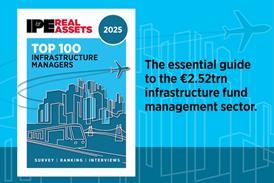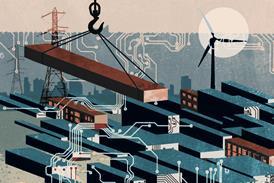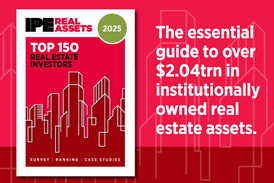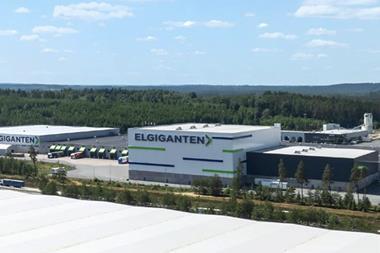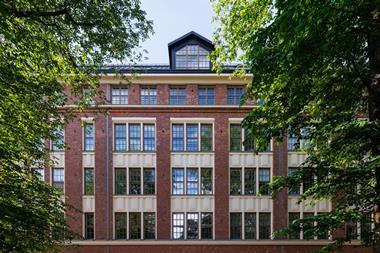Will the occupier market hold? With UK commercial property returns falling on the back of a repricing of cash flows, the question is how far the occupier market will hold up and partly offset deteriorating investor sentiment.
So far, the historical economic data remain positive. The UK economy expanded by 0.7% QoQ and 3.2% YoY in Q3 - well above the trend rate and despite of the credit crunch. Employment expanded by 0.3% QoQ and 0.5% YoY in Q3, and unemployment remains at historical lows.
The sectoral employment figures for Q3 make for particularly interesting reading. Financial and business service sector employment - crucial for the Central London office market - came in at 0.9% QoQ and 3.1% YoY in Q3. This was the fastest rate of growth since Q1 2006.
Admittedly, distributive trades (largely retail trade) employment growth was flat on the quarter, but this is actually a marked improvement on 2005 and 2006 when we saw job-shedding in the retail sector. Furthermore, the annual rate of distributive trades employment growth ticked up to 1.1% YoY - a three-year high (see figure 1).
The monthly data are also fairly encouraging. Survey data from the British Retail Consortium show like-for-like sales for November holding steady at 1.8% in the UK. In the corporate sector, we saw industrial production bounce back sharply in October, with monthly growth of 1%. The more timely CBI Industrial Trends Survey and the CIPS Manufacturing Survey also showed an improvement in November. Admittedly, the CIPS Service Sector Survey did tick down in November, but the key PMI indicator remains above the ‘boom-bust' level of 50.
So far, then, the real economic data seem fine. The downside risk is that the credit crunch will lead to job losses in the City, as well as exacerbating the housing market slowdown, leading to job losses in the retail sector. Both would knock the commercial property occupier market, damaging rental growth.
The impact on the jobs market in the City is unclear - we have few forward-looking indicators for the sector. The news from the housing market is bleak. House prices fell outright on the Rightmove, Hometrack, Nationwide and Halifax indices in November, bringing annual house price inflation back into single digits.
Mortgage approvals - a reliable forward-looking indicator - have also fallen away rapidly - coming at just 88,000 in November, down from 100,000 in October.
The second key question for commercial property investors is how far credit conditions will ease, allowing geared investors some relief and making commercial property yields look more attractive relative to gilt yields.
The ability of central banks to ease monetary conditions is being limited by inflationary pressures. It is amazing to think that, only a year ago, commercial property operated against a benign macroeconomic backdrop.
Bank of England (BoE) governor Mervyn King called it the ‘NICE' economy, characterised by Non-Inflationary Consistent Expansion. This translated into cheap financing costs/rising property prices and steady jobs growth/rising rental growth. Crucially, with inflation under control, investors could rest assured that any temporary demand shock would be offset by a monetary easing.
A year later, and commercial property is in the midst of a cyclical slowdown in prices exacerbated by deteriorated economic fundamentals. Those of us of a more dismal bent might term this the RIP economy: Renewed Inflation: Impotent Policy Makers.
Commodity prices remain near historical highs and the deflationary impact of goods and services exports from China and India is diminishing in magnitude. This is showing up in rising producer price inflation. Figure 2 shows that PPI was running at 4.5% YoY in November - its highest level since 1991. The fear is that producers will eventually start passing on these price rises to consumers, pushing CPI further above the BoE's 2% target, limiting the capacity for further interest rate cuts.
The limited scope for rate cuts is made worse by the fact that central banks are getting less real economic impact for the rate cuts that they are making. The BoE held interest rates at 5.75% in October but cut them to 5.5% in November.
This is of limited impact because the mechanism by which the central bank policy rate is transmitted to retail and corporate borrowers has been thrown out of kilter by the credit crunch.
The rate of interest offered to borrowers is set by lenders that partly finance those loans in the money markets, and these lenders are still facing high premia over the base rate.
Figure 3 shows that the spread between the BoE and government borrowing rate remains high despite co-ordinated central bank liquidity injections.
Taken from IPD Impulse, December 2007
Sabina Kalyan is chief economist at IPD


